Tags
"neuroscience"
Behavioral Neuroscience at the University of Washington: LB Miller, Winter Shadow 2016

One of the pictures I took of glowing antibodies in a brain slice
I can’t say that I ever imagined myself slicing up a brain before junior year of college. A few short weeks ago, I found myself doing just that: turning the huge crank on a deli-slicer-like machine to create a fifty-micron slice of rat brain. I then used an extra fine paintbrush to fish the brain slice out of the negative 22oC resting place and into a room temperature solution that would preserve it for future experiments.
I started high school thinking that psychology was the path for me. Somewhere between the first day of 9th grade and my first day at Reed, I reimagined myself as a rebel who would never follow in their parent’s footsteps. As a freshman I wandered around the philosophy department, and stuck my head in the political science department and finally, with much chagrin, signed up to take intro psychology my sophomore year.
Because I came home to psychology relatively late in my college career, I had to find my way through the department quickly. I had only three years to complete my major requirements, while those who knew what they were about from early freshman year had four. When I found myself enchanted with behavioral neuroscience, I found that I did not have room in my schedule to pursue this interest as well as graduate on time. This is when the winter shadow program appeared in my life and gave me a wonderful opportunity to explore the field of behavioral neuroscience in a hands-on way.
Continue reading Behavioral Neuroscience at the University of Washington: LB Miller, Winter Shadow 2016
Off Quad Rule: Part 8
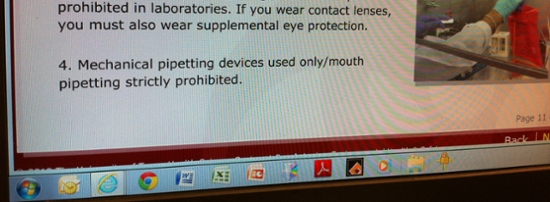
Tehina and Pita
There it is, no mouth pipetting… Sorry Makotes. After a good lab evaluation and fresh samples coming in, the few let downs stemming from the cannabinoid project are hardly felt. At the moment there are some technical difficulties being sorted out since I have been getting a signal of cAMP production when I don’t think I should be. Now I’m investigating a cAMP baseline for the lymphocytes I’m testing for comparison. The good news is that this is somewhat expected since I’ve moved on from the forskolin curve to also running the full agonist drug simultaneously with the forskolin and ATP, a new element to the complicated mix. One step forward, three or five back.
Ful Medames
This week has been super busy, the consequences of the power outage are slowly surfacing as I go about trying to use machines that have switched back to their manufacture default settings. They still work, there’s just a touch more tinkering around that adds up as the day passes along. This week more mouse brain samples arrived for tissue collecting and homogenizing. I finally got a clear picture of them to show you all, the worker making the extractions was excellent.
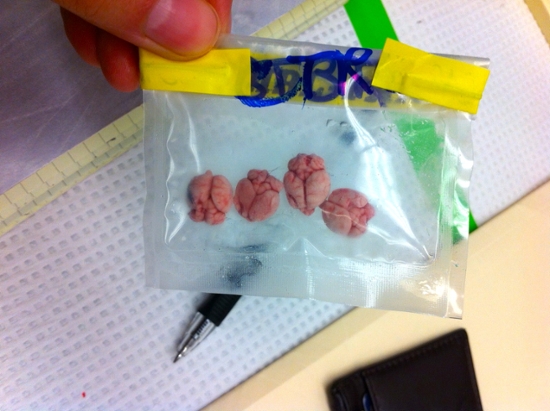 Figure 1. Mouse brains – 4 count. Don’t they look like candy? They’re also hard as rocks from bathing in liquid nitrogen. My thumb for scale, which is already small.
Figure 1. Mouse brains – 4 count. Don’t they look like candy? They’re also hard as rocks from bathing in liquid nitrogen. My thumb for scale, which is already small.
Continue reading Off Quad Rule: Part 8
Off Quad Rule: Part 6

Handkäse mit Musik
Pictured here is La Pequeña Flora, The Little Flower. It’s a church tucked away in a residential area that I happened upon. There are tons of old religious structures in San Antonio, I thought I would share my favorite one with you guys. Touring this was better than seeing the Alamo in my opinion. This week was quite eventful, with a human brain dissection and the chemicals for the ELISA kit I’m working on coming in. I also want to give a huge thank you to all of you sending me letters, the mailman here now knows me by my name due to the abnormal volume of mail I receive that isn’t just bills. As I finish off the final steps in the newest protocol (fingers-crossed) I wish the rest of you much luck with the projects and endeavors you’re tackling this summer. Let’s go Deutschland.
Continue reading Off Quad Rule: Part 6
Off Quad Rule: Part 5
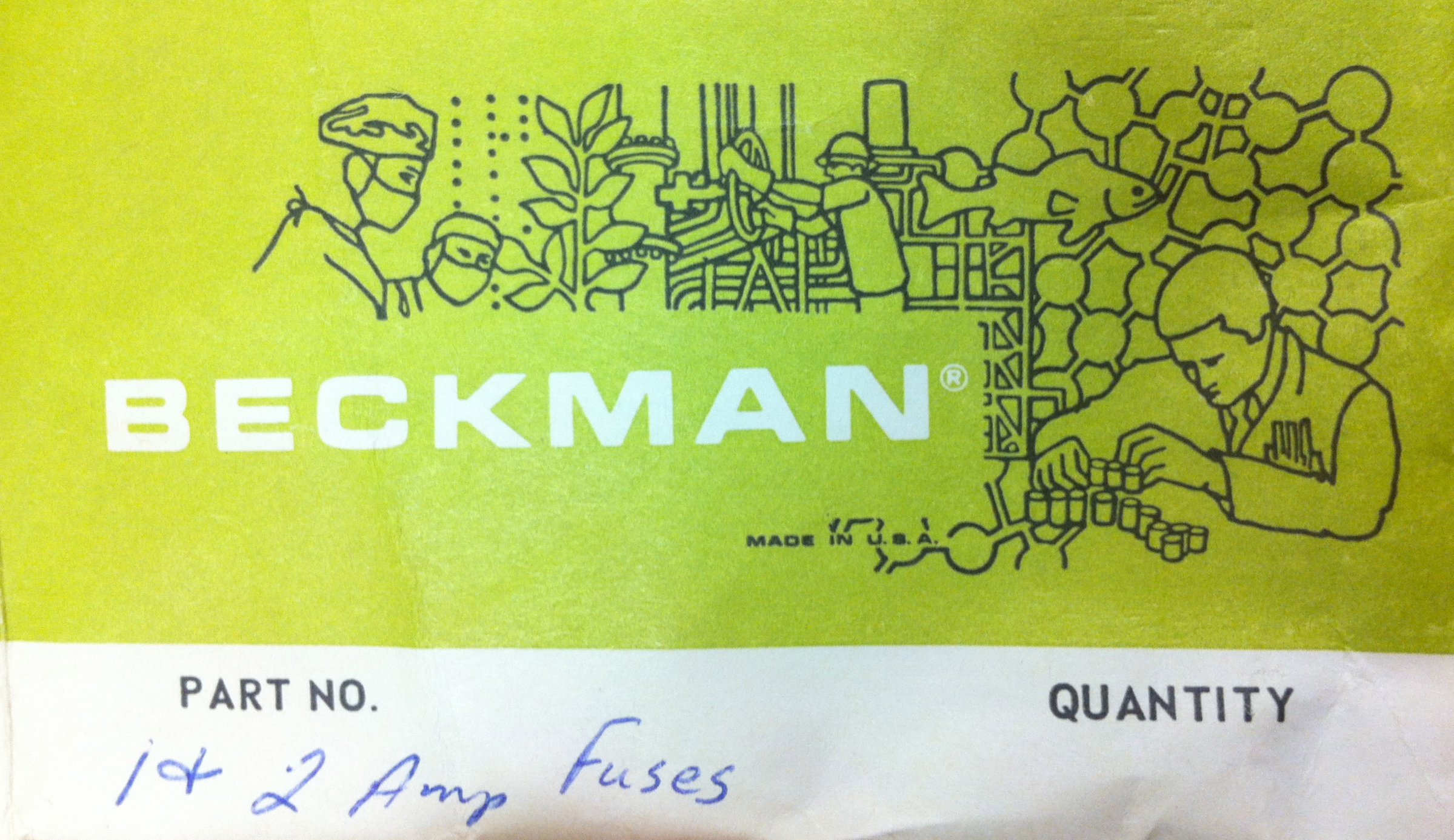
Mezes & Dakos
Happy Fourth! I hope you get to eat some good grilled food, dance among fireflies, and have your fair share of fireworks that aren’t your neighbors annoying second-rate cacophony of explosions tonight. Despite the first new curve analysis, which is promising (R2 = 0.998 for the lymphocyte protein curve, that is, what we think is in the samples, is in the samples), the THC project is currently on hold. There are high hopes of the new sample sets working with the ELISA enzyme assay kit, however due to unfortunate circumstances not all the necessary materials have arrived for round two (after all not every company can do -20°C overnight shipping like Sigma-Aldrich – it’s rather sketchy how that kind of transport it legal).
Spetsofai
Continue reading Off Quad Rule: Part 5
Off Quad Rule: Part 3
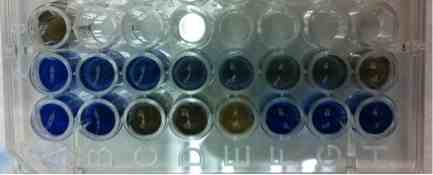
Suimono
This week started out great, with the Spurs winning on Sunday beating the Heat. Just when I thought my coworkers couldn’t be any happier or nicer, I am pleasantly surprised. The lab looks cleaner, the glassware is shining, and the hallways smell like victory in place of the familiar urine, iron, and formaldehyde-blended scents. This week I’ve been back and forth between two lab benches on opposite sides of the building, working on the preliminary data that measures the activity of cannabinoid receptors, specifically CB1 and CB2, in the collected lymphocytes.
Gyoza
Continue reading Off Quad Rule: Part 3
Reed Winter Externship Reflections 14: Number twenty-six, Thompson-Schill Lab, Phoebe Bauer
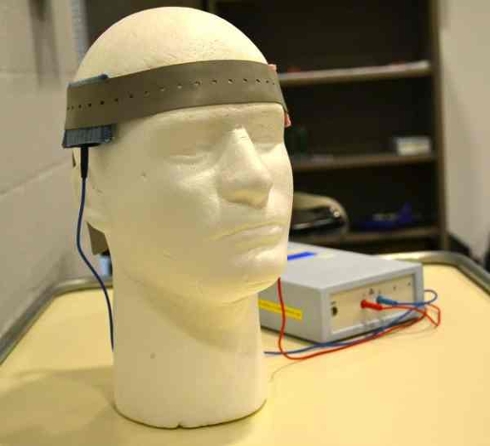
Despite having only a couple days to explore, this externship was productive and enjoyable. Sharon made sure to set up plenty of good things to make the best use of our time, so we bounced between people pretty quickly. We got to see a technique called transcranial direct current stimulation in action, with Ben as a participant. tDCS (see image) involves electrodes that pass a current intended to stimulate or impede neural firing through a certain section of a brain, therefore manipulating the behavioral outcome on an activity.
We also had the opportunity to talk individually with a number of Sharon’s graduate students and post-docs, hearing about their particular research projects in her lab as well as their career trajectories. This was incredibly useful, since we don't have access to people in those positions at Reed. Many of them encouraged us to take time off and see more of the world before entering grad school, because once on that path it will be a long time before we get another chance to do so. But having done their wandering they all seem quite happy to be where they are now, and I think their diversity of perspectives is one thing that makes her lab a good one.
Continue reading Reed Winter Externship Reflections 14: Number twenty-six, Thompson-Schill Lab, Phoebe Bauer
Reed Winter Externship Reflections 14: Number Fifteen, Center for Cognitive Research, Kavya Basu
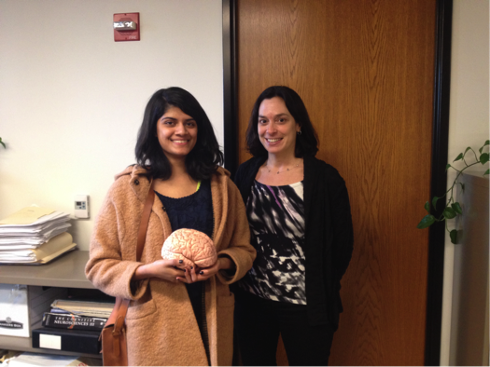
Over winter break, I was an extern at the Center for Cognitive Neuroscience under Dr. Sharon Thompson-Schill at University of Pennsylvania. My co-extern and I spent our days at Sharon’s lab talking to her and other researchers about their research.
One of the topics that Sharon is interested in is cognitive control. This refers to the executive control of the prefrontal cortex on cognitive processes such as rational thought, task flexibility, and working memory. Interestingly, when the human brain is developing, the prefrontal cortex grows much slower than the rest of it—as a result children exhibit the traits of someone with a damaged prefrontal cortex for many years. This quality has inspired much research into ways to accelerate the prefrontal growth of children, to make them “mature” faster.
However, Sharon points out that there are some important tasks that children are better at than adults, like learning and creativity. Their prefrontal immaturity may actually aid in these tasks and the cognitive control that adults have inhibits them. I observed a tDCS experiment in the lab that either increased or decreased prefrontal activity in participants while they performed tasks that require learning and attention to see if their performance was affected by the changes in prefrontal activity. The idea was that participants with decreased prefrontal activity were more like children and would do better on the tasks without the control of the prefrontal cortex in action. Therefore, it may be inadvisable to hasten the prefrontal growth of children without fully understanding the benefits of slower growth. Perhaps it is most efficient for children to have underdeveloped prefrontal cortices to learn more fully and to develop flexible learning and rational thinking later as adults.
